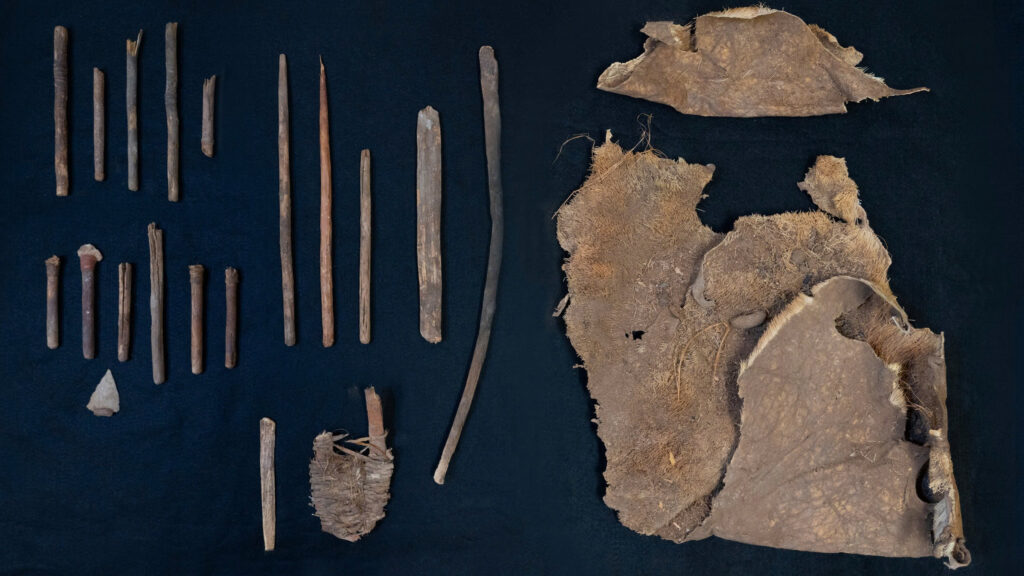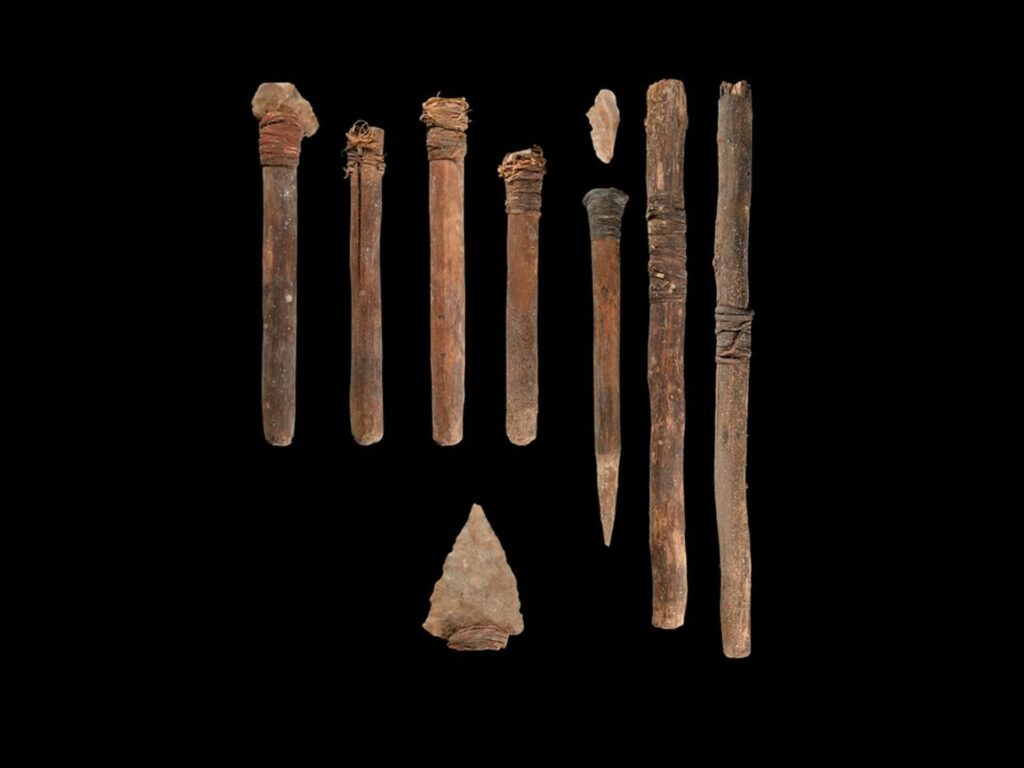A groundbreaking archaeological discovery deep within West Texas’ San Esteban Rockshelter cave system has unveiled a remarkably preserved hunting kit dating back approximately 6,500 years. This extraordinary find represents one of North America’s oldest intact weapon systems ever discovered, offering unprecedented insights into prehistoric hunting technologies and lifestyles.
The Remarkable Discovery
The excavation, conducted jointly by the Center for Big Bend Studies (CBBS) and the Odyssey Archaeological Research Fund at the University of Kansas, has transformed theoretical knowledge about ancient hunter-gatherer societies into tangible evidence. While researchers had long hypothesized that prehistoric inhabitants of the region employed atlatl-based hunting tools, this untouched cache provides definitive proof and allows for complete reconstruction of these sophisticated weapons.

The discovery included six stone-tipped foreshafts designed to connect darts to an atlatl (a spear-throwing lever), four hardwood foreshafts possibly used for poison delivery, four damaged dart nock ends, and an exceptionally rare straight-flying boomerang. A partial atlatl was also recovered, though one end of its handle had deteriorated over millennia.
“We’re missing the proximal handle end of the atlatl, but we know enough about this type to reconstruct what it may have looked like,” explained Devin Pettigrew, weapons expert and assistant professor at CBBS. The remarkable preservation state of these artifacts has enabled researchers to visualize the complete weapon system as it would have functioned in actual hunting scenarios—a rarity for finds of this age.
Beyond Weapons: Glimpses of Ancient Life
The cache revealed more than just hunting tools. Archaeologists also uncovered a carefully folded, tanned pronghorn hide that still retained its original hair, along with preserved human feces. These additional artifacts provide a uniquely personal connection to the ancient people who once inhabited the region.

The pronghorn hide featured evenly spaced holes around its edges, suggesting it had been tied to a frame for softening—a technique known from later Plains Native traditions. This detail offers a glimpse into the sophisticated hide-processing methods employed thousands of years ago.
The discovery profoundly affected the excavation team. “We just sat there and stared at it in wonder. That’s a moment in time,” Pettigrew recalled. “It’s akin to holding dish gloves that somebody put over the sink after doing the dishes. Somebody folded that hide up and sat that right on top of this rock, and nobody touched it for 6,000 years.”
Ritual Significance and Technical Innovation
The careful arrangement of the broken dart nocks and deliberate positioning of the weapon components suggests this cache may have held symbolic or spiritual significance beyond its practical value. While Pettigrew noted that such interpretations become more challenging the further back in time we go, the possibility adds intriguing cultural dimensions to the find.

Louie Bond of Texas Parks and Wildlife Magazine elaborated on the technical sophistication of these weapons: “The nock ends of the darts fit against the atlatl spur; the dart flexed when thrown to maintain straight flight. The dart foreshafts fit into sockets or sleeves in the end of a dart main shaft.” This ingenious design maximized both power and accuracy, crucial advantages for hunters pursuing large game in the challenging terrain of ancient Texas.
Video
A Window into Prehistoric Engineering
These insights reveal not only the technical ingenuity of prehistoric peoples but also illuminate their relationship with their environment—how they tracked, targeted, and hunted game using complex, reusable tools that represented significant investments of time and craftsmanship.

“This find is monumental,” emphasized Bryon Schroeder, Director of the Center for Big Bend Studies. “We get these incredible snapshots of life, vignettes of how they lived, what the environment was, and how they responded to it.” The meticulous excavation process revealed new surprises with each artifact uncovered, building excitement throughout the team.
What initially appeared to be a single hunter’s equipment cached for future use has emerged as a comprehensive window into an entire way of life—one characterized by innovation, adaptation, and possibly spiritual practice. As researchers continue to analyze this extraordinary collection, the San Esteban Rockshelter discovery promises to reshape archaeological understanding of prehistoric North American cultures for generations to come.

